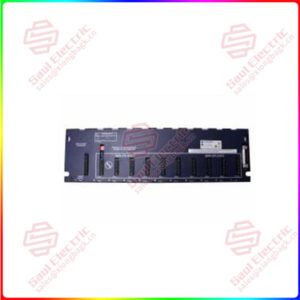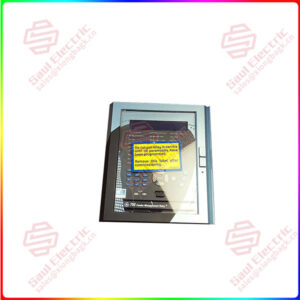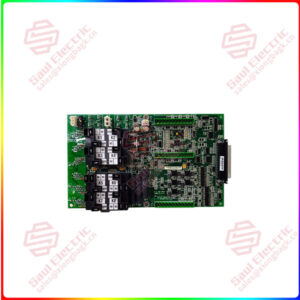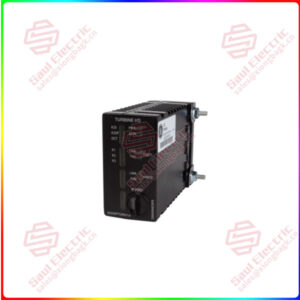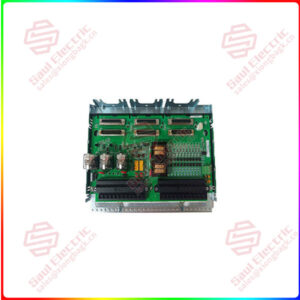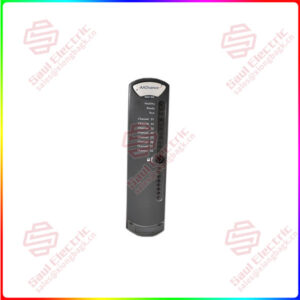Description
Overview
Essential details:IS200VAICH1D VME ANALOG INPUT MKVI BOARD
As a single-width board, the unit has a narrow front faceplate with a retaining clip located at each end. The front faceplate has three LED indicators built into its front. These will indicate updates to status, as well as information on run and fail issues.
The board itself is designed with two backplane connectors spaced equally on the rear edge of the board. These connectors allow the board to communicate with the rack and other boards within it. Typically, such connectors are designed as 37-pin connectors.
Other board components include processor chips and other integrated circuits, relays, resistors, transistors, and diodes. The components may be marked with their original manufacturer identification part number, which will allow you to use datasheets for additional information. All are marked with some sort of reference designation on the surface of the board.
Part No.: IS200VAICH1D
Manufacturer: General Electric
Country of Manufacture: United States
Product Type: Contact Input Group Isolation terminal board
Series: Mark VI
IS200VAICH1D is a Contact Input Group Isolation terminal board developed by GE. The VAIC (Analog Input/Output Control) board accepts 20 analog inputs and controls four analog outputs. Ten inputs and two outputs are available on each terminal board. The terminal board is connected to the VME rack, which houses the VAIC processing board, through cables. VAIC converts the inputs to digital values and sends them to the VCMI board, which then sends them to the controller through the VME backplane. The VAIC translates digital values to analog currents and drives them into the customer circuit via the terminal board. Both simplex and triple modular redundant (TMR) applications are supported by VAIC.
- The terminal board’s input signals are fanned out to three VME board racks R, S, and T, each containing a VAIC, when used in a TMR setup. IS200VAICH1D is a Contact Input Group Isolation terminal board developed by GE.
- The VAIC (Analog Input/Output Control) board accepts 20 analog inputs and controls four analog outputs. Ten inputs and two outputs are available on each terminal board. The terminal board is connected to the VME rack, which houses the VAIC processing board, through cables.
- VAIC converts the inputs to digital values and sends them to the VCMI board, which then sends them to the controller through the VME backplane. The VAIC translates digital values to analog currents and drives them into the customer circuit via the terminal board.
- Both simplex and triple modular redundant (TMR) applications are supported by VAIC. The terminal board’s input signals are fanned out to three VME board racks R, S, and T, each containing a VAIC, when used in a TMR setup.
IS200VAICH1D Compatibility
The VAIC board comes in two generations, each with its own terminal board. All versions before to and including VAICH1C are included in the original VAIC. This generation also includes VAICH1B. These boards can sustain up to 500 load resistance at the end of 1000 feet of #18 wire while driving 20 mA outputs. For optimal operation, this generation of board requires terminal board TBAIH1B or earlier. They are also compatible with all DTAI terminal board revisions.
Installation
To install the V-type board, follow these instructions.
- Turn the VME processor rack off.
- To seat the board’s edge connectors, slide it in and push the top and bottom levers in with your hands.
- Tighten the captive screws on the front panel’s top and bottom.

IS200VAICH1DAB
lf you need to inquire or purchase ,please send the product models to my email or call medirectly .
sunny He
[Email] sales@saulcontrol.com
[Mobile] 86-18059884797
[WhatsApp] 86-18059884797
[Skype] sales@saulcontrol.com
IS200VAICH1D VME ANALOG INPUT MKVI BOARD
Operation
Signal conditioning, an analog MUX, an A/D converter, and a D/A converter are all included on the VAIC board, which receives 20 analog inputs and controls four analog outputs. Jumpers on the terminal board specify the kind of analog input, which can be voltage, 4-20 mA, or 1 mA.
Two of the four analog output circuits are 4-20 mA, while the other two are 4-20 mA or 0-200 mA.
IS200VAICH1D Diagnostics
- The state of the VAIC front panel is shown by three LEDs at the top. The RUN state is flashing green, whereas the FAIL condition is a solid red. The third LED shows STATUS and is ordinarily off, but flashes a constant orange if the board has a diagnostic alert condition. The following diagnostic tests are included:
- Hardware limit testing is performed on each analog input using non-customizable high and low levels that are predetermined to be near the limits of the operational range. A logic signal is set and the input is no longer examined if this limit is exceeded. The entire board generates a composite diagnostic warning called L3DIAG VAIC if any hardware limit on the input is reached. Information about each diagnosis is available from the toolbox. Individual diagnostic signals may be latched, and the RESET DIA signal may be used to reset them.
- System limit checking for each input is based on programmable high and low values. These restrictions, which can be adjusted for enable/disablement and latching/non-latching, can be utilized to trigger alarms. The out of bounds are reset via RESET SYS.
- In TMR systems, one signal is recognized and a defect is issued if it deviates from the median value—the value that was voted on—by more than a predefined amount. This may give an early warning that a problem is emerging in one channel.
- Take note of your D/A outputs, output currents, total current, suicide relays, and 20/200 mA scaling relays, as these are all susceptible to faults and are monitored for reasonability.
- VAIC examines the TBAI ID card. A read-only chip with the terminal board serial number, board type, revision number, and the location of the JR, JS, and JT connectors is where the board ID is encoded. A hardware incompatibility fault is triggered when the I/O processor reads the chip and encounters a mismatch.
Compressor Stall Detection
Gas turbine compressor stall detection is performed at 200 Hz by the firmware. There are two stall algorithms available. The first four analog inputs, scanned at 200 Hz, are used by both. Referring to the picture, Tiny (LM) Gas Turbine Compressor Stall Detection Approach, one algorithm is for small LM gas turbines and employs two pressure transducers. The other technique (see the picture, Heavy Duty Gas Turbine Compressor Stall Detection Algorithm) is for heavy-duty gas turbines and makes use of three pressure transducers. For clarity, real-time inputs and configurable parameters are divided. The parameter CompStalType selects the type of algorithm required, either two transducers or three. PS3 is the compressor discharge pressure. A drop in this pressure (PS3 drop) indicates a possible compressor stall. The algorithm also calculates the rate of change of discharge pressure, dPS3dt, and compares these values with configured stall parameters (KPS3 constants).


 1 Year Warranty
1 Year Warranty
